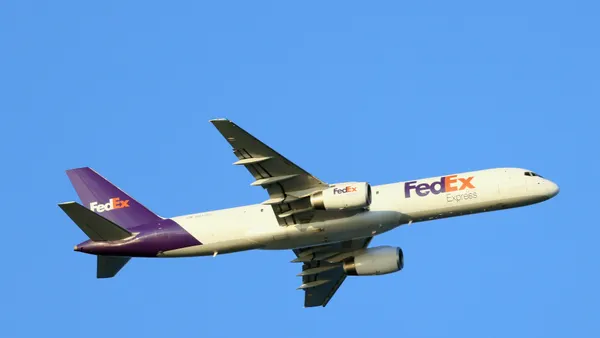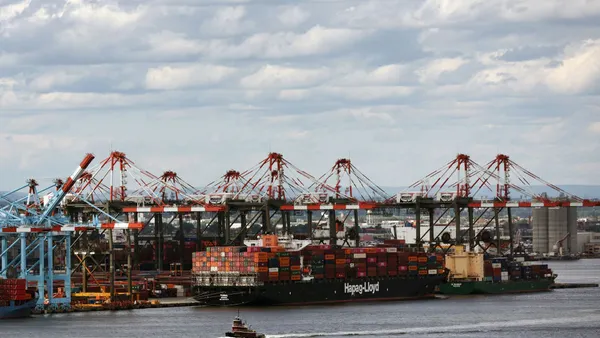Dive Brief:
- Air cargo volume was up 2% YoY in February, but it was down 1% compared to 2019. Capacity was down 5% YoY and down 8% compared to 2019, according to the latest figures from Clive.
- "To give a meaningful view, it makes senses to keep an eye out to 2019 before the pandemic took hold and, on that basis, air cargo demand is now nearly at par with pre-Covid volumes despite much less capacity in the market," Niall van de Wouw, the managing director of Clive Data Services, said in a statement.
- Exports out of Asia saw particularly high demand to start the year. Hong Kong International Airport saw a more than 15% uptick in export cargo in January, according to figures reported in a research note by UBS.
Dive Insight:
Freight capacity is a hot commodity, with a tight ocean market extending lead times for shippers across industries. Some companies, like Peloton, are forking over higher fees for airfreight in an attempt to move their cargo.
Airfreight operator Atlas Air Worldwide noted on its earnings call last month that this was resulting in increased demand for its services.
"In addition to the significant reductions in passenger belly cargo capacity on long-haul trade lanes, COVID-19 is also causing congestion and delays at ocean ports worldwide," Atlas CEO John Dietrich said. "As a result, shippers are increasingly using airfreight to avoid bottlenecks in their supply chains. And that’s driving even further near-term demand."
February also brought the Lunar New Year — usually considered an airfreight peak season — which resulted in an uptick of rates in the middle of the month, according to the latest Baltic Air Freight Index. The market did cool down following the holiday.
"Some substantial ups and downs in February as we finally see Asia export markets come off, shedding several dollars off the per kilo price with much of the price action occurring post-Lunar New Year as demand slips away," reads the latest release from Baltic Exchange, which also noted that the sea-to-air conversion is resulting in continued strength in rates between Asia and the U.S.
The International Air Transport Association said manufacturing and economic activity are driving air cargo demand. Data from Clive and IATA shows volume growth compared to 2019.
"But while there is a strong demand to ship goods, our ability is capped by the shortage of belly capacity normally provided by passenger aircraft," IATA CEO Alexandre de Juniac said in a statement.
Some carriers are working to expand capacity. CMA CGM began an air cargo operation. Atlas Air said it has ordered four new 747-8 freighters from Boeing. Boeing said more freighters are currently flying than there were before the pandemic, as a result of the lost belly capacity.
"The dramatic growth of e-commerce in the past year has fueled express freighter expansion," Boeing CEO David Calhoun said on the company's earnings call in January. "This has supported the demand for our cargo aircraft as seen in recent orders, from DHL for eight 777 freighters and from Atlas Air for four 747 freighters."
The cargo sector of the air industry has recovered faster than passenger travel, which is still struggling.
"That should be a sign to governments that they need to share their plans for restart so that the industry has clarity in terms of how soon more capacity can be brought online," de Juniac said.
Robert Frei, the business development director at TAC Index, said pricing in the airfreight market remains fairly unstable. This presents some risks for forwarders who have benefited financially and set records for air cargo movements over the last few months.
"We also assume the spread of spot rates is likely to remain high," Frei said in a statement.















